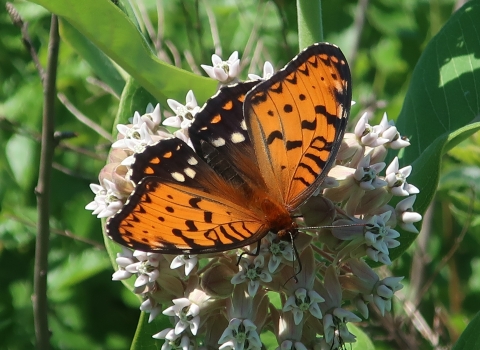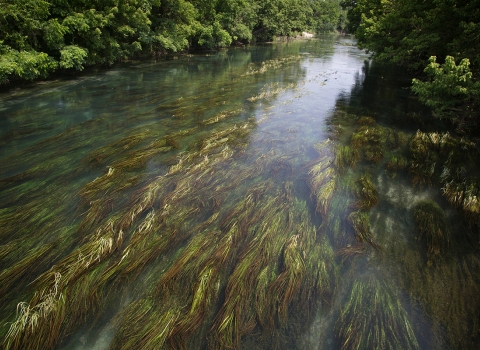News
Wildhorse Mountain Wind Energy Project Habitat Conservation Plan
The U.S. Fish and Wildlife Service has approved the Wildhorse Mountain Wind Energy Project Habitat Conservation Plan (HCP) and has completed an Environmental Assessment (EA) for the issuance of an Incidental Take Permit for the operation of a wind turbine facility in southeastern Oklahoma. The HCP is designed to minimize and offset impacts to the endangered Indiana bat and threatened northern long-eared bat from wind turbines operating on the project in Pushmataha County.
The Endangered Species Act (ESA) requires all incidental take permits (ITPs) to include HCPs, which describe the anticipated effects of a proposed taking and how those impacts will be avoided, minimized, and mitigated.
The HCP covers the operation of the 29 wind-turbine project that was constructed in 2019 in Pushmataha County, Oklahoma. Wildhorse Mountain Wind Energy Project’s HCP fully offsets the impacts of windmill operations by preserving a deciduous forest mitigation area. The Service determined 27 acres of forest summer habitat is needed to offset the impacts on Indiana bat, and 84 acres of the same for the northern long-eared bat. The HCP includes the preservation of 90 acres of contiguous forested habitat, exceeding the mitigation requirements for both species.
Along with the final HCP, the Service is publishing a final Environmental Assessment (EA), which evaluates the effects of issuing the ITP and addresses comments received during the public comment period. Under the plan, industry participants will work with Wildhorse Mountain Wind Energy Project to ensure projects minimize impacts to Indiana and northern long-eared bats, and mitigation is in place to offset the project’s impacts to the species and their habitat on a voluntary basis. The HCP and ITP will be in effect for 30 years.
Both bats eat insects, weigh around a quarter of an ounce, and have wingspans around 10 inches. Indiana bats have dull grayish chestnut colored fur. The northern long-eared bat is lighter tan in color and has long ears, as the name suggests. The Indiana bat was listed as endangered in 1967 due to disturbance of bats hibernating in caves during the winter, resulting in the death of large numbers of bats. The northern long-eared bat was listed as threatened in 2015 because of the spread of white-nose syndrome.
White-nose syndrome is an illness that has killed over a million bats since 2006 when dead and dying bats, with the distinctive "white nose," were first observed. "White nose" refers to presence of a white fungus often seen on the faces and wings of affected bats. The fungus causes irritation and disturbs the bats during their winter hibernation, inducing them to become active and utilize their limited fat reserves, leading to starvation. White-nose syndrome also is now the major threat to the Indiana bat and northern long-eared bat, along with countless other bat species throughout much of the U.S. and Canada.
America’s fish, wildlife and plant resources belong to all of us, and ensuring the health of imperiled species and their habitats is a shared responsibility. We continue working with partners and the public to use improved and innovative ways to conserve and recover imperiled species.









